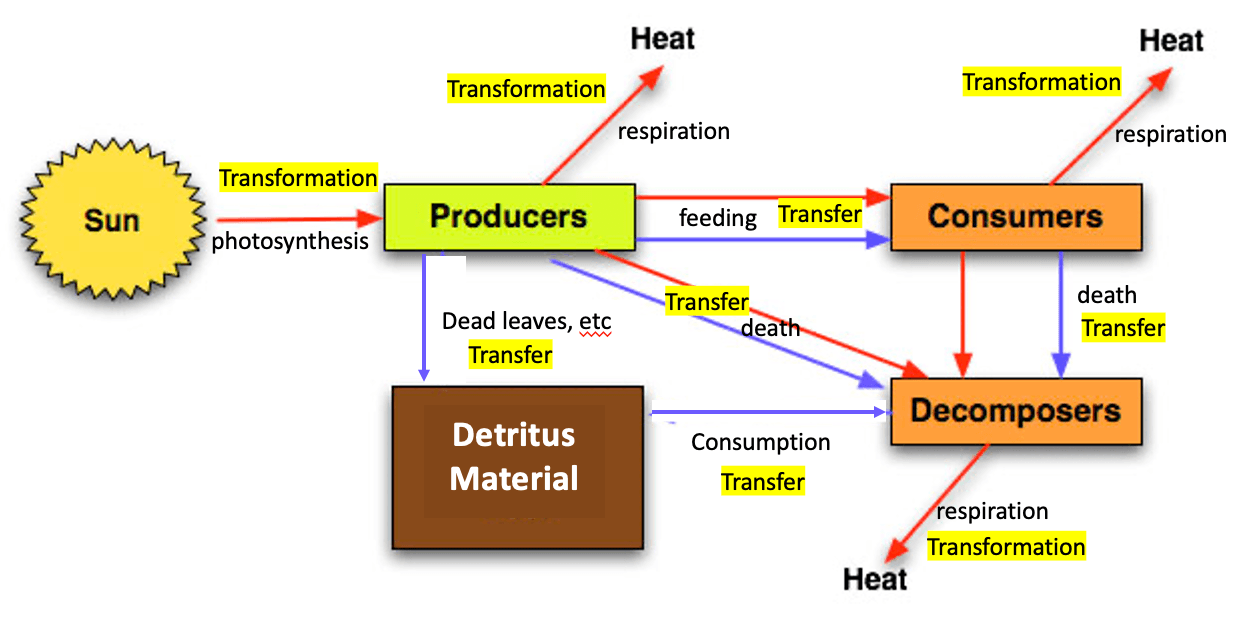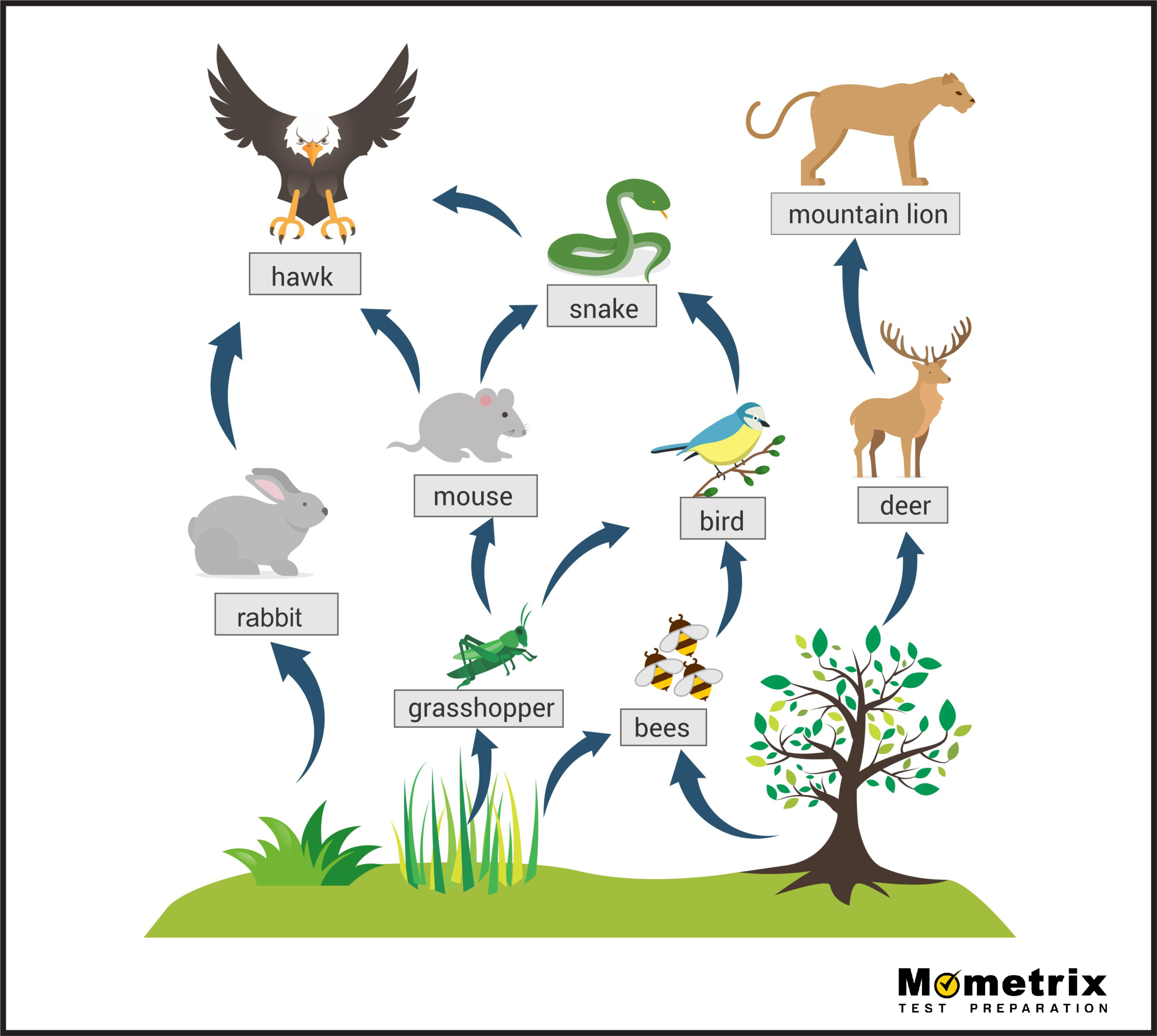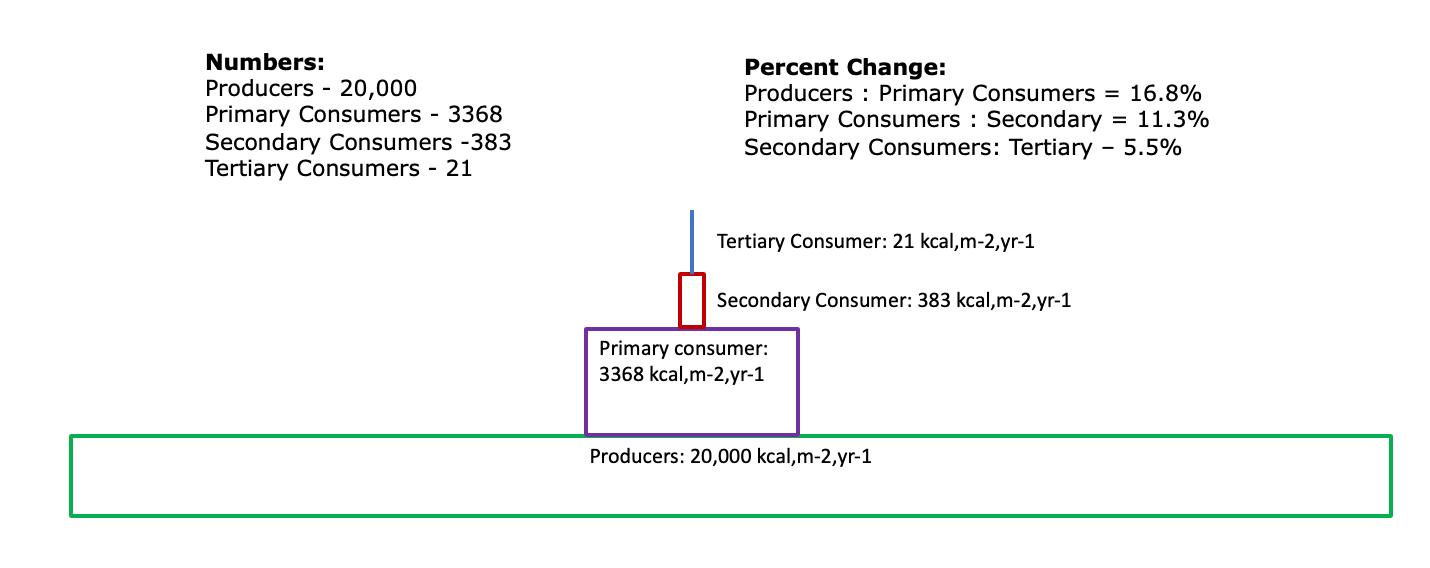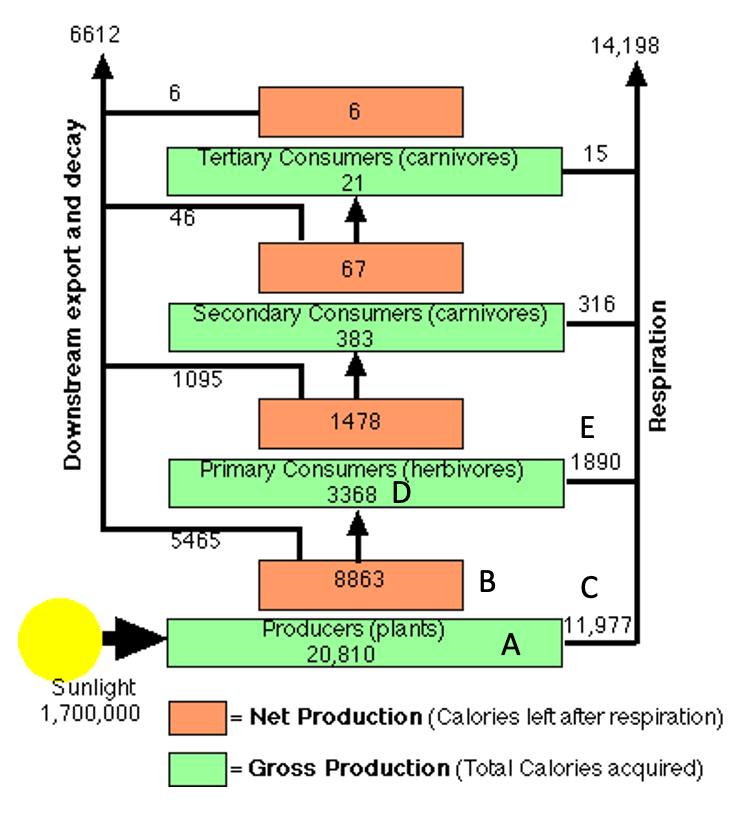What is the different between a storage and flow in a systems model?
storages = hold something (energy, matter, food)
flow = the movement of energy, matter, etc from one storage to another.
Identify the first and second law of thermodynamics
1st law: energy is neither created nor destroyed.
2nd law: entropy increases over time.
What is a biological community?
A group of populations of organisms living and interacting with each other in a common habitat.
What is the difference between a transfer and a transformation of energy?
Transfer = energy is moving without changing form from one thing to another.
Transformation = energy is changing form from one type to another as it moves from other thing to another.
Name the three types of ecological pyramids.
Numbers, Biomass, and Productivity
Explain the three types of systems AND identify which system represents an ecosystem
Isolated System- hypothetical concept where neither energy nor matter is exchanged across the boundary
Closed System- only energy is exchanged across the boundary
Open System- both energy and matter are exchanged across the boundary = ecosystem!
Equilibrium - the tendency for a system to return to its original state following a disturbance
Stable State equilibrium characteristics open systems (like ecosystems), where the inputs and outputs of energy and matter remain more or less constant.
What is the difference between: autotroph, heterotroph, consumer, producer, and decomposer?
autotroph - produces it owns food via photosynthesis, similar to a producer as producers produce their own food. All producers are autotrophs.
Heterotrophs are organisms that gain their energy from eating (consuming) other things. Consumers specifically eat other organisms, decomposers eat dead things.
In a food web, what do the arrows represent? Give one example of the direction the arrows would point.
Arrows represent energy flow.
Cat <---- mouse (arrow flows to the thing that is gaining energy)
Tropical Rainforest overall, estuaries.
Due to the size of it, the ocean is also very productive.
Draw an ecosystem, labeling and diagraming storages and flows, with transfers and transformations.

What is the difference between a positive and negative feedback loop? Give a specific example of one of each within an ecosystem.
Positive feedback (destabilizing) = amplifies changes and drives the system toward a tipping point/ new equilibrium.
Example: soil erosion- As more soil is removed from the ecosystem, when it rains, water collects on the ground. A point can be reached where the amount of water collected is greater than the water that can infiltrate the soil. So, instead of going downwards, water begins to flow laterally, taking even more top soil with it.
Negative Feedback (stabilizing) = output of a process inhibits/ reverses the operation of the same process in such a way as to reduce or counteract the change/ deviation.
Example: predator-prey interactions - as the predators increase the prey decreases, which causes the predators to decrease because the ecosystem can no longer support the predators, as the predators decrease, the prey begin to increase, allowing more predators- repeating cycle.
All living organisms respire, releasing heat and energy, photosynthesis is the method in which plants convert the suns energy into useable energy. It is this energy that is used within the ecosystem to sustain life. That energy is measured in terms of productivity.
At what trophic level is the bird? (give level and NAME of level)

3rd: secondary consumer.
Compare and contrast the use of a biomass pyramid vs a productivity pyramid in modeling an ecosystem.
Both Biomass and Productivity have the issue of only being able to use samplings of populations to measure their numbers. It is impossible to measure either exactly. They also both assume organisms only exist in one trophic level which is rare.
Biomass Pyramids: Often creates lopsided pyramids (one oak tree can support large amounts of life); Organisms are killed to measure dry mass, so not an ideal collection method; Time of year influences biomass which makes it unreliable year round.
Productivity pyramids: Most accurate system; Shows actual energy transfer and allows for rate of production; Allows comparison of ecosystems based on relative energy flow; Pyramids are not inverted; Energy from solar radiation can be added unlike Biomass
In what ways (at least 2) have humans disrupted the nitrogen AND carbon cycle?
In both cycles combustion (of forests/fossil fuels) increases concentration of oxides in atmosphere;
In both cycles deforestation/agriculture/SDW lead to decomposition that also releases oxides (CO2 or NO2);
but carbon dioxide released (by respiration) into atmosphere/(whereas) nitrous oxides are released into soil water (by nitrification);
both oxides will increase impact of global warming/ climate change; but NOx to a smaller degree;
both oxides result in the acidification of water/aquatic bodies; but only NOx may cause acid deposition/acidify soils; deforestation removes organic storages of both N and C (stored in plant biomass); Reduces absorption of C from atmosphere (via photosynthesis) (but not N);
Soil erosion which reduces inorganic N storages in soil (but not C);
use of inorganic fertilizers increases N in soil (but not C); and run-off may cause excessive inorganic N in aquatic systems (but not C);
pesticide/herbicide use in agriculture might kill organisms thus reducing both C and N organic storages (stored in their biomass);
… thus reducing nitrification/ denitrification/ decomposition process/ (whereas) effect on C cycle is limited to reducing respiration by soil animals;
extraction of oil/coal/gas reduces underground (ancient) C storages/transfers C storages on surface (for human use)/(whereas) effect to N cycle is limited to a few organic compounds/aromatics found in oil;
Describe a specific example of a tipping point of a named system.
Answers will vary. An example: Boreal Forest in Alaska may be reaching a tipping point due to climate change. As temperatures increase, the permafrost which defines much of that biome, begins to melt. As it begins to melt, it changes the plants and animals that can live there, not to mention to addition of sink holes and new diseases which can appear. The entire landscape appears different.
Why are toxins, like DDT, an problematic to ecosystems, specifically food webs?
Two words: bioaccumulation and biomagnification. The more a toxin is in an environment the more it accumulates in a population. The more toxic a single population means the more likely it will be biomagnified up the food web, creating problems for higher trophic levels as they end up by 1000s of more times toxic than the lower trophic level organisms.
Respiration (heat)
Not eating all of an organism
some organisms die before being consumed
not all parts of an organism can be digested
What is the difference between Gross secondary productivity and Net Secondary Productivity?
Gross secondary productivity is the amount of energy/ biomass assimilated into consumers (GSP = food eaten - fecal loss). vs Net Secondary Productivity is the GSP minus the energy loss via respiration.
Explain the relationship of BOTH laws of thermodynamics to the flow of energy in an ecosystem.
1st law: energy is neither created nor destroyed. 2nd law: entropy increases over time.
Energy is not created in an ecosystem by obtained and used by the ecosystem starting with photosynthesis in producers and then moving through the ecosystem, being lost as respiration (heat). Meaning the 1st law applies here as the ecosystem is an open system with the wider universe. The second law can be seen in the ecosystem as energy becomes harder and harder to track the higher the trophic level.
Discuss three factors that affect the resilience of an ecosystem.
Some examples include:
1. more diverse and complex an ecosystem the more resilient (more interactions between different species)
2. greater biodiversity of an ecosystem, more likely the removal of one organism can be replaced by another.
3. greater genetic diversity increases resilience as ecosystems are less likely to be killed by disease
4. large ecosystems, more resilience as there is less edge effect (see topic 3)
5. climate affects resilience - higher temperatures and rainfall = faster growth rates and do not limit the ability of the ecosystem to change.
6. faster rates of species reproduction, means faster recovery (see topic 3)
7. removal of human threats or mitigation of treats to system results in recovery.
Using the following numbers, draw a productivity ecological pyramid: (numbers in Kcal, m-2, yr-1)
Producers - 20,000
Primary Consumers - 3368
Secondary Consumers -383
Tertiary consumers - 21

Explain why the length of a food chain (ie how high the trophic level can go) is limited.
Energy transfer is not 100% efficient. The energy found within the ecosystem is in the producers. As only roughly 10% of energy is transfer between ecosystems, this limits how high up an organism can be before not gaining enough energy.
Using the letters indicated identify which letter or combination of letters = gross primary productivity vs net primary productivity vs gross secondary productivity

GPP = A
NPP = A - C
GSP = D